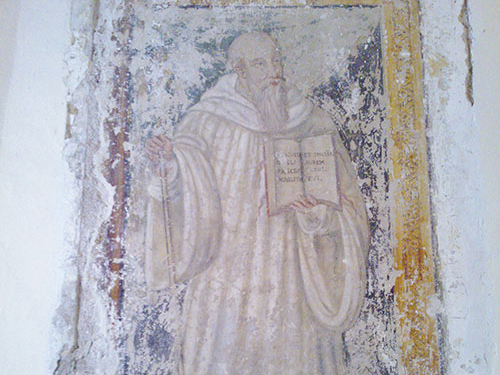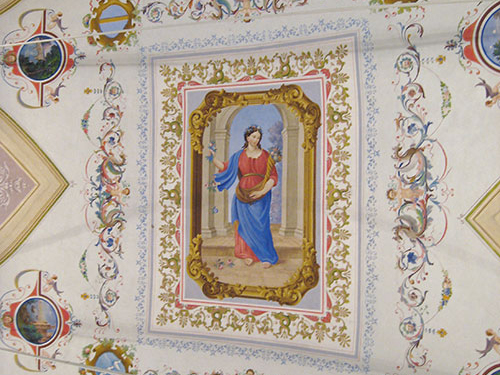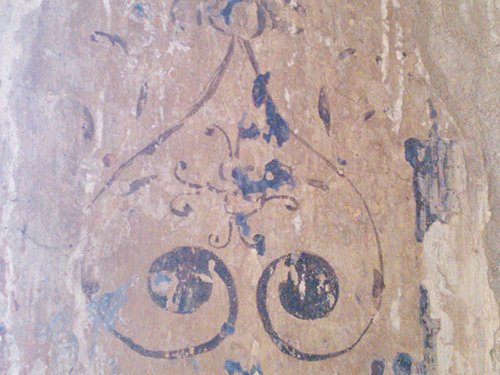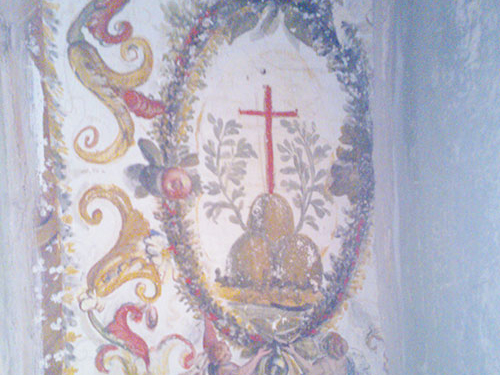History of the monastery
The monastery was built in the year 1158 and was named after St. Peter. The monastery belonged to the Benedictine Order, and by 1177 it had become an abbey with more than 100 churches under its control. It was probably built as a resting place for pilgrims travelling from Rome and through Umbria on their way to the Holy Land.
Roots in Roman times
The monastery is situated by the old Roman road, the Via Flaminia, which runs from Rome out to the Adriatic Sea, where in medieval times pilgrims boarded ships to continue their journey to the Holy Land. The Via Flaminia was a pilgrimage route up until the 14th century.
Much of the history of the monastery is unknown, but we do know that it was embroiled in a dramatic period when the small city states were making war on one another. The monastery also suffered when the town of Trevi was destroyed in 1240, and it was at this time that, legend has it, the monastery was visited by Saint Francis of Assisi.
Saint Francis in the monastery
When Saint Francis of Assisi visited the monastery, he was unable to sleep after evening prayers, feeling that his spirit was assailed by evil. He went out into the night, made the sign of the cross and declared: “I am ready to endure all kinds of suffering, as Our Lord did.” The feeling of evil disappeared and Francis went back to bed and slept peacefully.
The next morning, the monk Pacifico prayed with Francis before the wooden crucifix above the altar. Tradition has it that the monk had a vision in which he saw a number of thrones in heaven. Among them was a particularly large and magnificent throne, and the monk heard a voice which said: “This was the throne of Lucifer, and Francis shall sit in his place.”
This episode is depicted in the frescoes in the Basilica di San Francesco, the church of St. Francis in the town of Assisi.
Visits from several popes
The monastery fell into decline and the monks became poor, wandering mendicants. In 1484, Pope Innocent VIII transferred the monastery to the Olivetan Benedictines from Monte Oliveto.
The monastery was then enlarged and equipped to receive papal visits. The cloister and well were built, and around the cloister arches resting on nineteen stone columns were constructed, while a colonnade with 38 columns was built on the floor directly above.
Wine cellar and olive oil press
In 1494 the wine cellar and olive oil press were constructed, along with stalls for the animals. The refectory, or dining room, on the ground floor, was built in 1507, at the same time as the abbot’s quarters. The dormitory, or sleeping quarters, was added in 1518. The wall around the herb garden was built in 1545 for the visit to the monastery of Pope Paul III. In 1585 the abbey was again “modernised”, with small cells added on the first floor. The construction of the abbey was now complete.
A 17th-century chronicle states that “Monks who lived a good life in the love of Christ were a good example and a benefit to the people.”
The Olivetan monks lived and worked here peacefully until they were driven out by Napoleon and his army in 1810, since when the monastery has been privately owned.




